Author Archives: Alicia Cormie
How to find the best smartwatch or fitness tracker for you
 To help you find out what smartwatch or fitness tracker is right for you, we break down features and prices for our latest lineup of wearables.
To help you find out what smartwatch or fitness tracker is right for you, we break down features and prices for our latest lineup of wearables.
Source: The Official Google Blog
Keep yourself safe with these 5 Pixel features
Source: The Official Google Blog
Pop quiz: How well do you know Google?
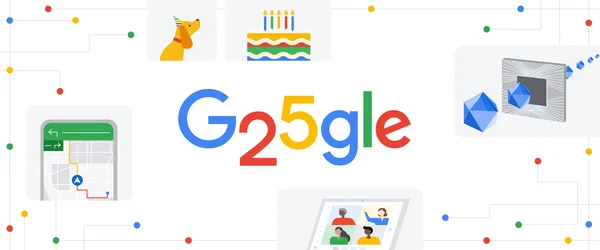 For 25 years, you’ve come to us with your questions. Now we have some questions for you. Take this quiz to test your Google knowledge.
For 25 years, you’ve come to us with your questions. Now we have some questions for you. Take this quiz to test your Google knowledge.
Source: The Official Google Blog
How Google Pixel Watch knows when you fall
Source: The Official Google Blog
4 ways that switching to Pixel is easier than ever
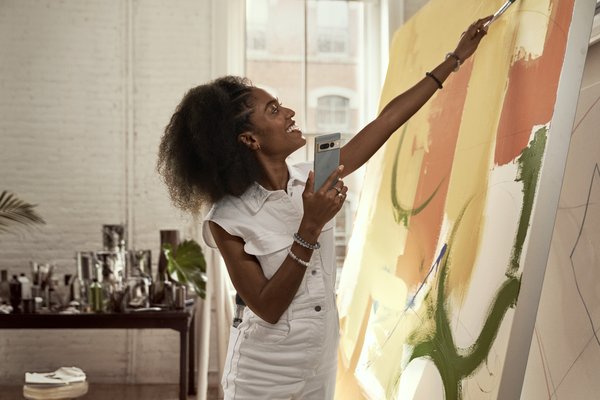 Switching to a new Pixel phone has never been easier. Just connect, select and transfer to get started on your new Pixel.
Switching to a new Pixel phone has never been easier. Just connect, select and transfer to get started on your new Pixel.
Source: The Official Google Blog
10 design details you didn’t know about in our new hardware lineup
“Design is about solving problems,” says Ivy Ross who leads the team that creates how a Google product — including new products announced today at our Made by Google event — looks, feels and acts when you hold it in your hands. When designing this new line of products her team had to solve a whole host of choices — from designing a WiFi router you actually want to put on your shelf to deciding what Google's first-ever watch should look like.
We chatted with Ivy — along with Isabelle Olsson, who leads design for home and wearable products and our team that develops colors, materials and finishes for hardware products, and Claude Zellweger, who leads industrial design for Pixel phones — to get the scoop on 10 design details in our latest hardware products that were made with you in mind.
Colors to calm you
Pixel 7 Pro comes in a fresh new color: Hazel. The nature-inspired greenish hue is soothing, and the warm gold metal finish adds some polish. The Pixel 7 comes in a new energizing color: Lemongrass. “We wanted to create colors that are calming, yet also surprising,” Isabelle says. If being matchy-matchy is the kind of look that calms your mood, you’ll be happy to see matching color combos and finishes across products.
Line up the lenses
Both phones have horizontal camera bars that now blend seamlessly into the frames — and the aluminum in the housing and camera bar is 100% recycled content.
Silky to the touch
Pixel 7 has a silky smooth feel thanks to our new zirconia-blasted matte finish. Meanwhile, Pixel 7 Pro has a high-polished aluminum finish that takes inspiration from jewelry and watches.
You bezel believe it
The phones feature a bezel that’s even thinner than the Pixel 6 phones. With a thinner bezel — which is the frame on the front of the device that isn’t the screen — you can look at more content that’s relevant to you as opposed to extraneous borders.
A smartwatch dripping with inspiration
Inspired by water droplets, the smooth domed glass face of the Google Pixel Watch keeps it from snagging on your shirts or sleeves. But that design choice was more than just a functional one. “A smartwatch first and foremost is a watch,” says Ivy, who pulled from her background as a jeweler and her love for collecting traditional watches to help design this watch. “The round design represents the ancient shape of time and balances the fact that we fit all of the modern smarts of Google and health and wellness features from Fitbit into the watch.”
Bands that click with any mood
From casual to formal to active, there’s a watch band designed for all your moods and needs. Plus, according to Isabelle, the way the bands click into place to attach is incredibly easy and satisfying.
A color combo to rule them all
To get the perfect mix of colors for the woven fabric watch band accessory — which is made of recycled plastic yarn
A shelf-worthy design
You’ll want to give some countertop real estate to the new Nest WiFi Pro, which was designed to look good out in the open. “The areas where WiFi routers go — like countertops, side tables and shelves — usually have beautiful collected items from people's lives like a flower vase, a sculpture or a stack of books,” Isabelle says. To make sure the Nest WiFi Pro fits in with people’s treasured objects, the team chose a high-gloss finish — inspired by ceramics and glassware — and subtle hues that match any vibe.
Good things come in small packages
You might notice that the Pixel phone packaging has less plastic — the packaging is now 99% plastic free. The team ditched extraneous materials and created a box the phones fit safely and snugly inside.
Sustainability as the guide
From choosing recycled materials for our packaging and products to coming up with designs that create less waste and are built to last — sustainability is built into so many of the decisions our designers make. Because of these thoughtful choices, we’ve used even more recycled materials in our newest products, like the Nest Wifi Pro which is made of more than 60% recycled materials. And it doesn’t stop here. By 2025, we aim to use recycled or renewable materials for at least 50% of the plastic used across our hardware products. And we’re on track to eliminate plastic from our packaging by that same time. Each of these goals is another challenge our design team is ready to tackle.
Source: The Official Google Blog
10 design details you didn’t know about in our new hardware lineup
“Design is about solving problems,” says Ivy Ross who leads the team that creates how a Google product — including new products announced today at our Made by Google event — looks, feels and acts when you hold it in your hands. When designing this new line of products her team had to solve a whole host of choices — from designing a WiFi router you actually want to put on your shelf to deciding what Google's first-ever watch should look like.
We chatted with Ivy — along with Isabelle Olsson, who leads design for home and wearable products and our team that develops colors, materials and finishes for hardware products, and Claude Zellweger, who leads industrial design for Pixel phones — to get the scoop on 10 design details in our latest hardware products that were made with you in mind.
Colors to calm you
Pixel 7 Pro comes in a fresh new color: Hazel. The nature-inspired greenish hue is soothing, and the warm gold metal finish adds some polish. The Pixel 7 comes in a new energizing color: Lemongrass. “We wanted to create colors that are calming, yet also surprising,” Isabelle says. If being matchy-matchy is the kind of look that calms your mood, you’ll be happy to see matching color combos and finishes across products.
Line up the lenses
Both phones have horizontal camera bars that now blend seamlessly into the frames — and the aluminum in the housing and camera bar is 100% recycled content.
Silky to the touch
Pixel 7 has a silky smooth feel thanks to our new zirconia-blasted matte finish. Meanwhile, Pixel 7 Pro has a high-polished aluminum finish that takes inspiration from jewelry and watches.
You bezel believe it
The phones feature a bezel that’s even thinner than the Pixel 6 phones. With a thinner bezel — which is the frame on the front of the device that isn’t the screen — you can look at more content that’s relevant to you as opposed to extraneous borders.
A smartwatch dripping with inspiration
Inspired by water droplets, the smooth domed glass face of the Google Pixel Watch keeps it from snagging on your shirts or sleeves. But that design choice was more than just a functional one. “A smartwatch first and foremost is a watch,” says Ivy, who pulled from her background as a jeweler and her love for collecting traditional watches to help design this watch. “The round design represents the ancient shape of time and balances the fact that we fit all of the modern smarts of Google and health and wellness features from Fitbit into the watch.”
Bands that click with any mood
From casual to formal to active, there’s a watch band designed for all your moods and needs. Plus, according to Isabelle, the way the bands click into place to attach is incredibly easy and satisfying.
A color combo to rule them all
To get the perfect mix of colors for the woven fabric watch band accessory — which is made of recycled plastic yarn
A shelf-worthy design
You’ll want to give some countertop real estate to the new Nest WiFi Pro, which was designed to look good out in the open. “The areas where WiFi routers go — like countertops, side tables and shelves — usually have beautiful collected items from people's lives like a flower vase, a sculpture or a stack of books,” Isabelle says. To make sure the Nest WiFi Pro fits in with people’s treasured objects, the team chose a high-gloss finish — inspired by ceramics and glassware — and subtle hues that match any vibe.
Good things come in small packages
You might notice that the Pixel phone packaging has less plastic — the packaging is now 99% plastic free. The team ditched extraneous materials and created a box the phones fit safely and snugly inside.
Sustainability as the guide
From choosing recycled materials for our packaging and products to coming up with designs that create less waste and are built to last — sustainability is built into so many of the decisions our designers make. Because of these thoughtful choices, we’ve used even more recycled materials in our newest products, like the Nest Wifi Pro which is made of more than 60% recycled materials. And it doesn’t stop here. By 2025, we aim to use recycled or renewable materials for at least 50% of the plastic used across our hardware products. And we’re on track to eliminate plastic from our packaging by that same time. Each of these goals is another challenge our design team is ready to tackle.
Source: The Official Google Blog
When the war in Ukraine started, these Googlers pitched in
The day Russia invaded Ukraine is seared into Agata’s memory. Compelled to act, the Warsaw-based Googler put her name into a Google Doc that listed employees offering their homes to those fleeing Ukraine. The next day, Agata's household grew from six to 11 people. A Ukrainian Googler in the Czech Republic had gotten in touch about lodging for five loved ones who had escaped to Poland but were unable to find housing.
"You're just so happy that you're doing something because the feeling of helplessness is the worst," Agata said. She not only spent the day before her guests arrived prepping the house but also found the time to buy a cake. "We wanted to celebrate; we wanted them to feel welcome."
As Agata's family settled into their new routine with 11 people under their roof, Russia's war in Ukraine continued. Today, more than 7 million refugees have fled Ukraine — the majority of them women, children and the elderly — making this Europe's biggest refugee crisis since World War II. Googlers like Agata have stepped up to help those affected by the war, from hosting refugees and transporting people across the border to providing supplies and starting aid organizations.
Initially, the most immediate need was to help people fleeing the country find a safe place to stay. Googlers were using Docs — like the one Agata put her name into — to connect those in need with those willing to help. Those connections helped Dublin-based Googler Olga get her mother, sister-in-law, nephew and niece out of Ukraine and into safety.
"When the war began, the hardest thing was convincing families to escape. Nobody wants to head into the unknown — they're leaving everything behind and don't know if they will come back," said Olga, who has a brother who had to stay behind in Ukraine. "I needed them to know they had somewhere to go."
Thanks to Mária, who was working for Google while based in Bratislava, Olga's family did have somewhere to go once they’d made a harrowing, days-long drive to the Slovakian border. After other Googlers connected the two women, Mária arranged for her father to pick up Olga's family at the border crossing with a cardboard sign and the promise of a place to sleep. Mária's family hosted them until they were able to reunite with Olga in Dublin.
"I will always be grateful to Mária and her family," said Olga. "It was so incredibly kind — far beyond the kindness you expect from strangers."
The goodwill of strangers has been a running theme throughout the war, as was the case when a group of four Googlers based in Italy joined together with a desire to help. Giovanni, Federica, William and Jacopo funded and coordinated a multi-day mission to drive more than 40 hours to pick up a family of 10 at the Ukrainian border and unite them with their grandmother in Rome.
Federica helped drive from Venice to the refugee center at the Polish-Ukrainian border to meet the group. "These were two mothers leaving their kids with us, and they'd been traveling a week to get to this point. To watch them say goodbye — knowing that they were going back into a warzone and their kids were going away with people they had never met before — was an image that almost goes against nature," she said. "Eventually, using Google Translate, the two mothers told us: 'We are so happy you are bringing our kids to their grandma.' Saying goodbye to these two women was the most difficult part of the whole journey."
"When we were organizing and planning the trip, I was full of stress and fear. But once we started, that fear was replaced by energy," said Giovanni. "When we got back to Rome, and I saw their grandmother opening the doors of this big house a friend had given her for the family to stay in, and the kids rushed to her and embraced — that was a different kind of energy. To see this human connection was so fulfilling. You feel like you did a little to help — you gave back."
These four Googlers weren't the only ones packing cars with people and supplies to help out. Warsaw-based Googler Slawek loaded groups of eight people — and their luggage and pets — into a borrowed station wagon multiple times while leading a convoy of five cars into Ukraine. Together, Slawek and the other volunteer drivers transported refugees stuck at the overcrowded railway stations in Lviv to border crossings.
The initial urge to support those affected by the war spread well beyond Googlers living in Europe. When the war broke out, Mike, a Polish-born Googler based in Michigan, felt pulled to return to his home country. After a month of fundraising, he spent April in Poland near the Ukraine border. There, Mike clocked over 6,000 miles of driving to deliver food, toiletries and other supplies to centers that needed them. And he always made room for sweets to cheer up the kids.
Early in his trip, Mike met a 14-year-old boy who had arrived in Poland a week earlier. The boy, whose dad stayed behind to fight, hadn't heard from his father in days. "I had a soccer ball with me and gave it to him — his eyes absolutely lit up,” Mike said. “It wasn't just food and water that was needed. Giving him something that brought joy and seeing how he reacted will stick with me forever."
Beyond the initial support, some Googlers like Isa have focused on long-term rebuilding efforts. Isa, based in Germany, worked with a small Ukrainian-German team to create Lighthouse Ukraine. Lighthouse Ukraine hosts events that gather dozens of NGOs in one place to provide information and direct support for refugees. The first event was in Isa's hometown of Berlin, and, in May, they took Lighthouse Ukraine global. Over the past few months Lighthouse Ukraine has reached more than 20,000 refugees.
For Ukraine-born and Berlin-based Googler Nina, the work to rebuild is deeply personal. Most of her family members were in the country when the invasion began, and many still are with no way out.
Just days after the invasion, Nina — alongside a group of volunteers — created United for Ukraine (UFU), a nonprofit that helps thousands of displaced people find services and support for things like temporary housing, legal aid and psychological support. Today, the nonprofit has grown to more than 150 volunteers and includes Googlers like Dublin-based, Ukraine-born Ella. By the end of summer, United for Ukraine had provided vital information to more than 200,000 people — helping over 10,000 people into temporary accommodations and supporting over 4,500 people with legal aid.
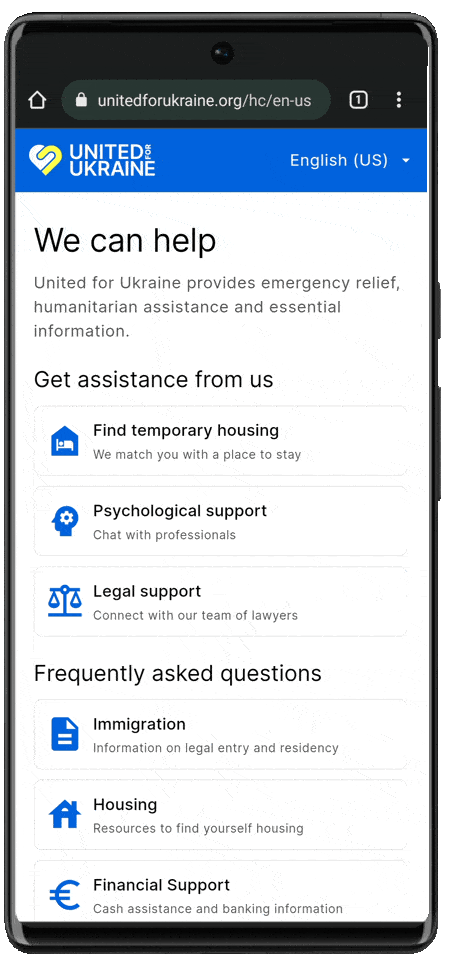
Resources on unitedforukraine.org, the site that gives people fleeing the Russian invasion access to trusted information and services when they enter a new country.
"We need to think beyond the important work of rebuilding the economy and helping displaced people. There will be a lot of trauma that people will be going through for years into the future," Nina said. “I know this myself. My mom got out, but my stepfather, two brothers and grandparents are still there."
While the effects are long-lasting, so are the stories that provide a beacon of hope and a reminder to act. As Agata learned, something as simple as putting your name in a Doc as someone willing to help can make all the difference.
"I understand we cannot stop the war, but we can do something for one person, for two people, for five people," Agata said. "It matters what you do as an individual. Every one of us is making history with our choices."
Source: The Official Google Blog
Pre-order your Pixel Buds Pro and Pixel 6a today
At I/O we shared our upcoming hardware including Pixel 6a and Pixel Buds Pro. As of today both devices are available for pre-order on the Google Store. Pixel 6a starts at $449 and Pixel Buds Pro are available for $199.
There’s a lot to be excited about with our latest phone and earbuds, so we sat down with two team members who worked on these products to hear about their favorite features, technology and more. Here’s what Soniya Jobanputra and Nidhi Rathi had to say.
Pixel 6a has Google Tensor, but what does that mean?
Soniya: When we set out to make A-series phones, we envisioned the ability to deliver a premium phone at a more affordable price. By including Google Tensor in Pixel 6a we’ve been able to achieve that vision because we now have the same brain powering our full generation of Pixel 6 phones.
A great example of this is also one of my favorite features: Live Translate. My family and I were on a vacation recently in French Polynesia, and our French is a bit…rusty. Reception wasn’t always reliable in some of the rural areas. With Live Translate on Pixel 6a, we were able to break down the language barrier and make the most of our vacation — and since all the processing happens on-device, cell reception was a non-issue. What a mind blowing experience!
What exactly is Active Noise Cancellation and how does it work on the Pixel Buds Pro?
Nidhi: Active Noise Cancellation works by creating an additional opposite sound to cancel out the noise around you. The faster your earbuds can hear outside sound and calculate the inverse sound, the better the noise cancellation becomes. Our in-house team of experts used custom speakers and a custom 6-core audio chip running Google-developed algorithms to speed up that process. It’s been incredible to see how quiet your space becomes and how you can simply immerse yourself in your music.
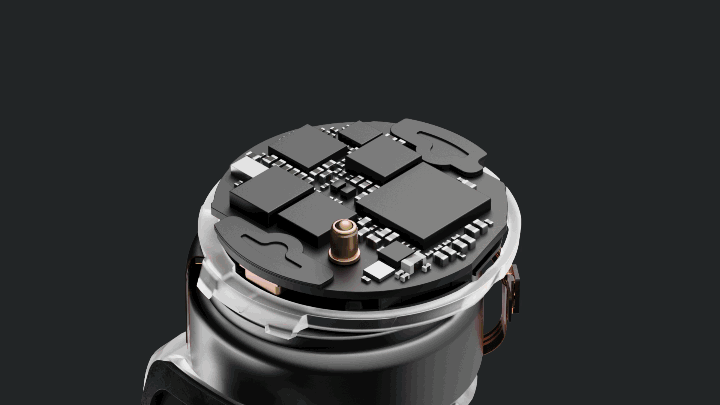
Once we had those smarts down, we needed to make sure we created the perfect seal. Everyone's ears are different, so it’s not always possible for the eartips to give a perfect snug seal and sound leaking in from the outside affects the listening experience. With Silent Seal™ — which adapts to your unique ear shape — and the multiple eartip sizes that come with the Pixel Buds Pro, we’re able to ensure that unwanted sound stays out.
So whether you’re trying to listen to music, catch up on a podcast or place a call, you’ll get a premium experience with Pixel Buds Pro. Sometimes that experience is so good I don’t even realize my partner is trying to get my attention!
So what about those times when I want to hear what’s going on around me?
Nidhi: We know there are times when you want to stay aware of your surroundings — like when you’re crossing the street. That’s where Transparency mode comes in handy. Using the same low latency engine as our Active Noise Cancellation, we quickly process and naturally pass through all the sounds that the earbuds hear from your environment. It will even help you avoid that plugged ear feeling so you can almost forget your buds are even in!
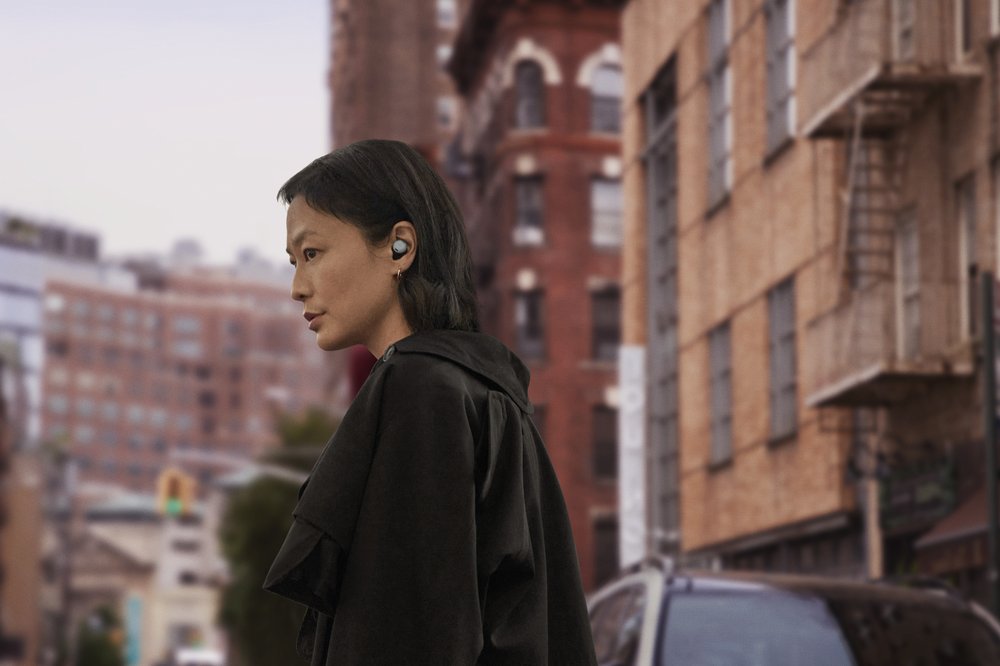
What’s your favorite experience on Pixel 6a? We know, it’s hard to pick only one!
Soniya: My favorite feature is Magic Eraser. I love it for both its practical and creative uses. It’s rare to find a beach with no people on it, but thanks to Magic Eraser all my beach vacation photos look like I had them to myself. And I use it to make quirky, memorable photos — like one photo where my kids were sitting on a swing, but I was able to make the swing disappear so it looks like they’re flying. ?
Pixel has always been known for its excellence in computational photography and Pixel 6a takes full advantage of the Image Signal Processor we share with Pixel 6 and Pixel 6 Pro, all thanks to Google Tensor. Pixel 6a shares the same post processing algorithms as our flagship phones allowing it to support incredible camera experiences like Magic Eraser and Real Tone.
Anything else you’d like to share before we go pre-order Pixel 6a and Pixel Buds Pro?
Soniya: We know protection is really important. I’m proud that Pixel 6a shares the same security architecture as our flagship phones, including the Titan M2 and multiple layers of hardware protection. And thanks to our common hardware platform, Pixel 6a will also receive five years of security updates from when the device first becomes available on GoogleStore.com, just like Pixel 6 and Pixel 6 Pro.
Nidhi: I love the Pixel Buds Pro case – it's so smooth, the texture feels like a pebble in my hand. The way it clicks closed is super satisfying, and it's small enough to fit in the pocket of my skinny jeans!
I’m also looking forward to Bluetooth multipoint and our audio switching technology. It automatically switches between your connected Bluetooth-enabled devices like phones, laptops, tablets and TVs - much easier than navigating Bluetooth menus.
Visit the Google Store today to pre-order Pixel 6a and Pixel Buds Pro. Both devices will be on shelves on July 28 across 13 launch countries, and with select retailers in India.